LeRoux at Home makes chocolate
Many years ago, LeRoux was a clothing store. In 1998, Michael and April Levandowski opened their flagship housewares store, LeRoux at Home, on Main Street in Vineyard Haven. They now have five stores in coastal New England, going up the coast to Portland, Maine. When they decided to create a chocolate bar brand, their coastal life influenced their unique chocolate bars — five chocolate bars with nautical names and vintage block-print packaging. But it is what’s inside that must be seen … well, actually tasted. Tight Lines is made with dark chocolate, peanuts, and pretzel; Asylum Harbor is also dark chocolate, but with toasty olive oil sourdough. For milk chocolate, try Scuttlebutt, with puffed rice and toasted sesame. All flavors are unique and small-batch, using chocolate made by Black Dinah Chocolatiers in Westbrook, Maine.
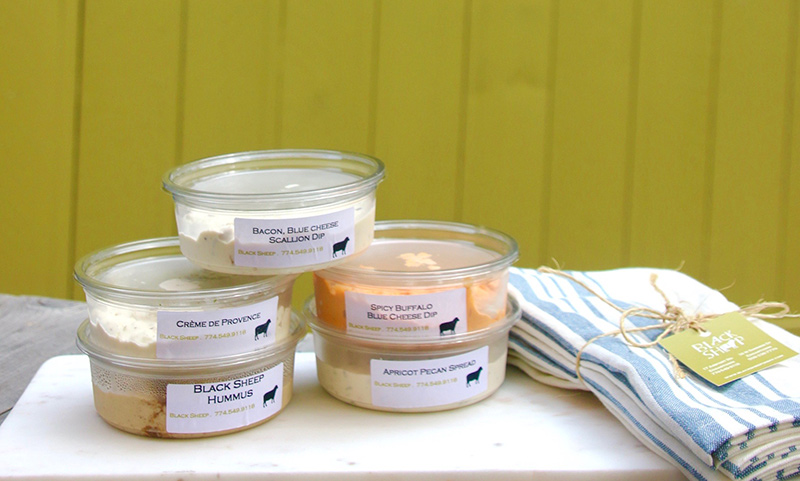
Black Sheep Mercantile
Mark Venette, owner of Black Sheep on Summer Street in Edgartown, has moved to a bigger kitchen. Black Sheep Mercantile opened at the airport last summer in the old Flatbread/Hot Tin Roof building, which has been repurposed into smaller spaces. The Summer Street location is still popping, but the expanded space allows Venette to stock up with all your party needs, such as these best-selling dips. The Buffalo Blue Cheese seems to be a legend already, as so many people have said, “You have got to get the Buffalo dip!” They also have a Castelvetrano olive and fennel tapenade sprinkled on top of Black Sheep hummus; that one’s a winner, just saying.


Nasturtium at North Tabor Farm
Matt and Rebecca Dix of North Tabor Farm in Chilmark have been growing this multifunctional plant for a few years. But lately, the popularity of nasturtium in the Martha’s Vineyard culinary scene has skyrocketed — it’s no longer just good for making a dish look prettier. This is largely due to the couple’s ambition to not only grow our community’s food locally, but to educate us about all the ways we can use the food they grow. While the nasturtium flower looks beautiful and tastes wonderfully peppery, Rebecca urges us to use and consume the stems, seeds, and leaves as well. She described each component of the plant as having a sort of “spicy succulent” flavor that actually intensifies with each summer harvest. She recommends chopping the stems up, or sprinkling the seeds right on top of a salad, to preserve the raw flavor. Hal Ryerson of the Sweet Life Cafe in Oak Bluffs uses the leaves to create a nasturtium pesto; North Tabor Farm now recommends this as well. Rebecca suggests mixing whichever part of the nasturtium you choose to use (more and more parts as the season goes on) with something to offset spice, because by the time you are reading this, the plant will be close to reaching its peak heat in flavor. North Tabor Farm’s provisions can be found at its self-serve farm stand and the West Tisbury Farmers Market, as well as on the plates of a number of Martha’s Vineyard restaurants.
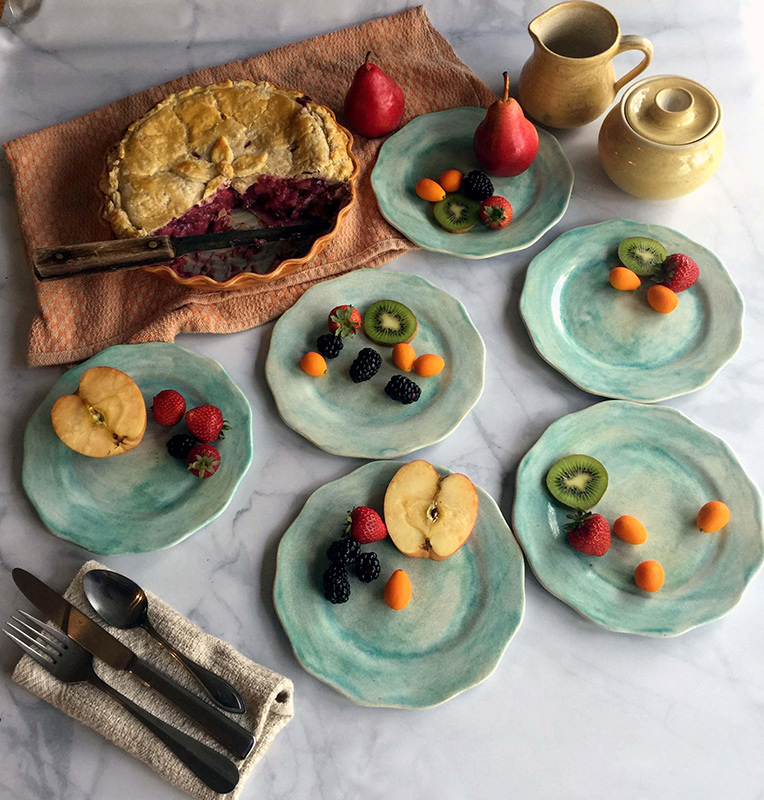
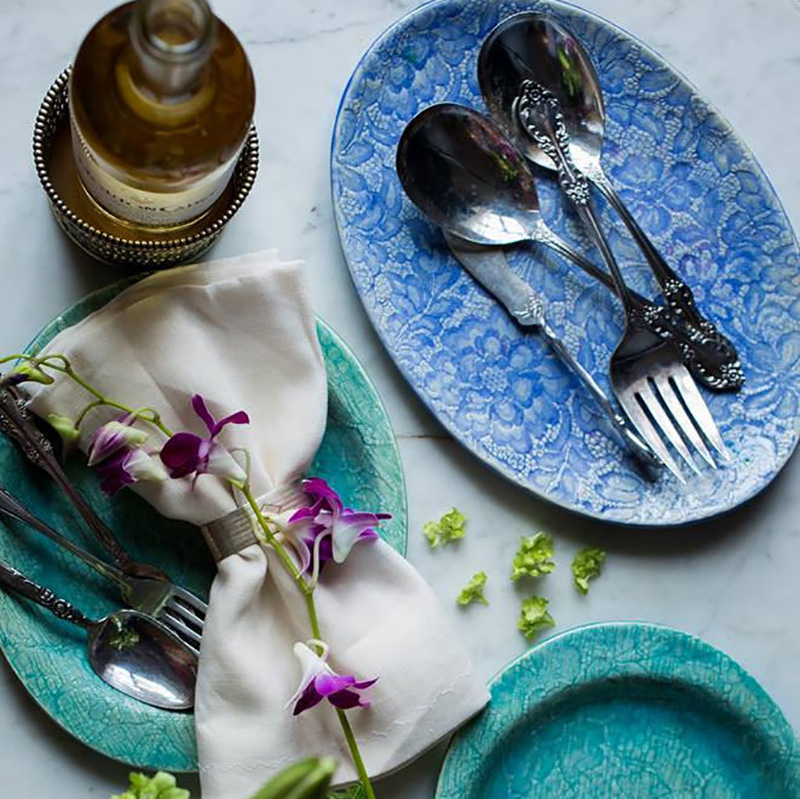

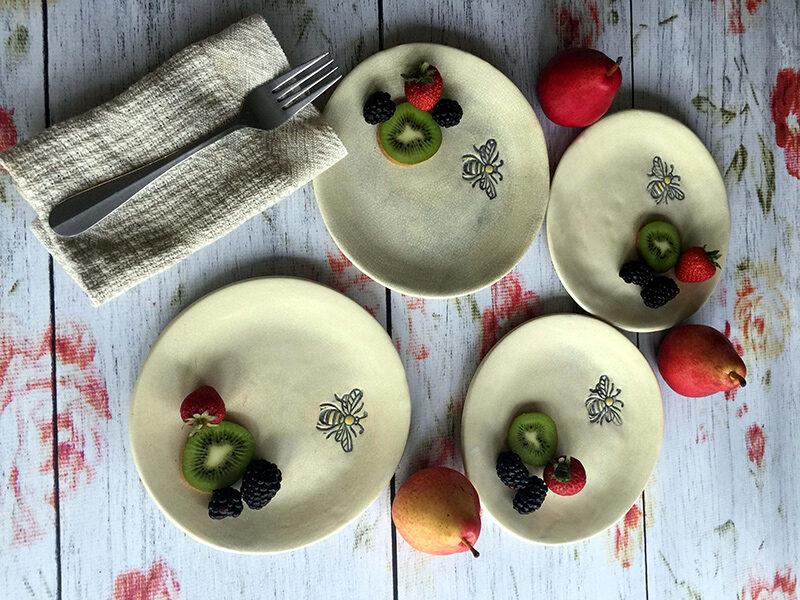
Leslie Freeman Pottery
Leslie Freeman has been making pottery on Martha’s Vineyard since 1978. While she made and sold wildly popular clothing out of her Vineyard Haven storefront, the Gypsy Suitcase, she found her niche when she became a full-time potter. She currently dedicates herself to creating and selling her work from her home studio. Her style could best be described as clean and simple, with a palette inspired by her surrounding Vineyard landscapes, which is constantly evolving. She has built an extremely successful website on Etsy, but you can also find and purchase her work through a number of Vineyard vendors, such as Morrice Florist, Seaworthy Gallery, and Althea Designs. She also makes custom work, and her showroom can be visited by appointment. Call 508-687-9988.
Chimichurri from the Scottish Bakehouse
If you are an Islander, you are aware of our not-so-well-kept secret located on the side of State Road as you head into the woods of West Tisbury. The Scottish Bakehouse couldn’t take the idea of “farm to table” any more literally, being that the farm from which they harvest many of their ingredients is only a few steps away from the sunny picnic tables dispersed on the market’s front lawn. I typically make my way to Bakehouse to indulge in their famous breakfast sandwich, or a delicious takeaway dinner, or some baked goods made with health in mind (never to sacrifice taste, might I add). I was recently intrigued by their packaged foods cooler, stocked with salads, eggs, sauces, butters, and marinades. Lucky for us, Bakehouse sells the homegrown and housemade components that make their cooking memorably tasty. My eyes and taste bud memory bank were drawn to the deep green bottle of their chimichurri sauce. Composed exclusively of fresh green summer herbs, garlic, oil, and citrus, there is not much that tastes more like this season than a mouthful of chimichurri. Bakehouse manager Pam credits their abundance of the sauce to the abundance of parsley in their garden each season. I would recommend using chimichurri in any savory dish you’d like to douse with a fresh, herbaceous, and summery flavor.
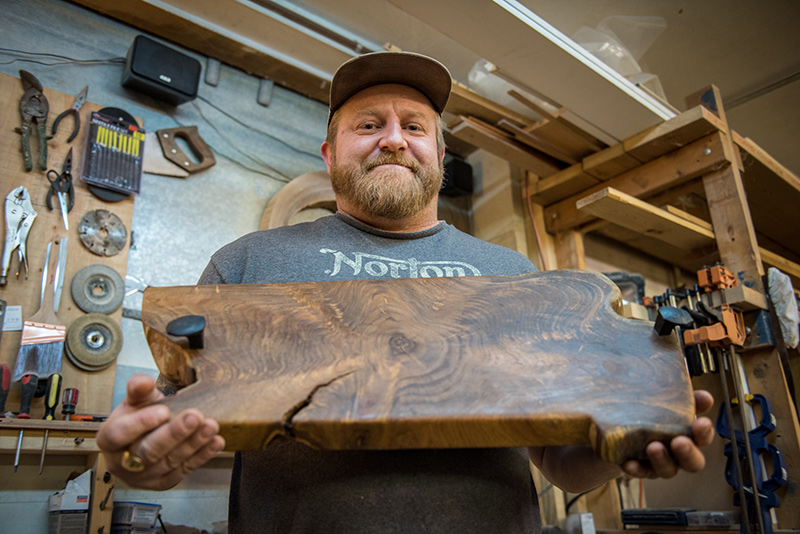
Cutting Boards by Mill and Mason
Sourcing the materials we use to build our dishes is as important as locally sourcing the food we consume. Brad Tucker and Liz Ragone created a woodworking business that uses recycled, or Vineyard-harvested, materials. Colin Hurd, who just joined the team, is another local craftsmen who has brought his knowledge, experience, and creative energy to the table. The team creates cutting boards that are as sturdy and useful as they are beautiful. Their pieces not only use local material, but they embody local culture as well. Brad explained, “All of our work has ties to the Island, its history, and its people. One of my favorite aspects of starting a project is paying a friend a visit that I haven’t seen in a while, to trade, barter, or buy old materials that have either been harvested here, or have a great story behind how they got here.” The trio uses materials from old houses, barns, and fences that have been demolished, while also incorporating a lot of local wampum, stone, and driftwood. Their work can currently be viewed and purchased at the Chilmark Gallery, but Mill and Mason will soon be launching a website with an array of items for sale as well.
















